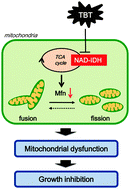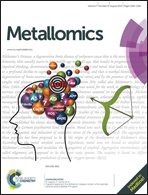Tributyltin induces mitochondrial fission through NAD-IDH dependent mitofusin degradation in human embryonic carcinoma cells
Abstract
Organotin compounds, such as tributyltin (TBT), are well-known endocrine disruptors. TBT acts at the nanomolar level through genomic pathways via the peroxisome proliferator activated receptor (PPAR)/retinoid X receptor (RXR). We recently reported that TBT inhibits cell growth and the ATP content in the human embryonic carcinoma cell line NT2/D1 via a non-genomic pathway involving NAD+-dependent isocitrate dehydrogenase (NAD-IDH), which metabolizes isocitrate to α-ketoglutarate. However, the molecular mechanisms by which NAD-IDH mediates TBT toxicity remain unclear. In the present study, we evaluated the effects of TBT on mitochondrial NAD-IDH and energy production. Staining with MitoTracker revealed that nanomolar TBT levels induced mitochondrial fragmentation. TBT also degraded the mitochondrial fusion proteins, mitofusins 1 and 2. Interestingly, apigenin, an inhibitor of NAD-IDH, mimicked the effects of TBT. Incubation with an α-ketoglutarate analogue partially recovered TBT-induced mitochondrial dysfunction, supporting the involvement of NAD-IDH. Our data suggest that nanomolar TBT levels impair mitochondrial quality control via NAD-IDH in NT2/D1 cells. Thus, mitochondrial function in embryonic cells could be used to assess cytotoxicity associated with metal exposure.


 Please wait while we load your content...
Please wait while we load your content...